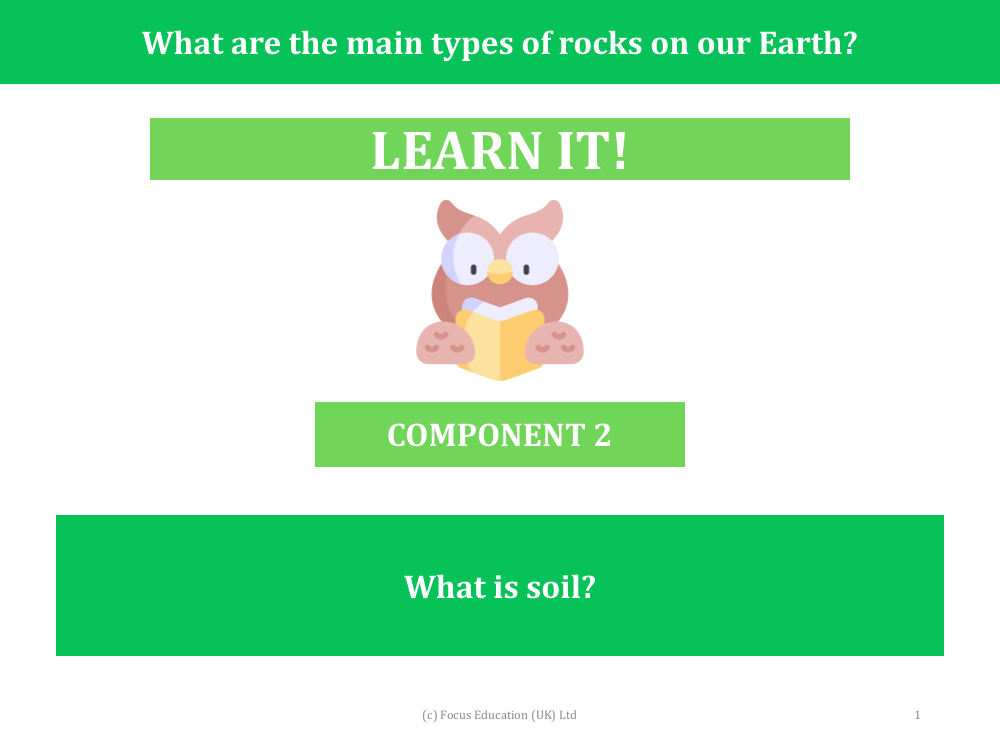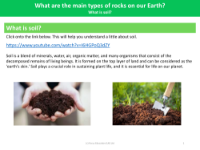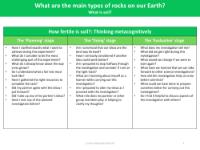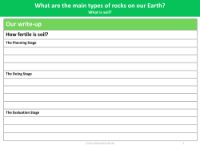What is soil? - Presentation

Science Resource Description
Soil is a complex substance that is vital for sustaining life on Earth. It is composed of a mixture of minerals, water, air, decomposed organic matter, and a variety of organisms. Often described as the 'earth's skin,' soil forms the top layer of the land and is essential for the growth of plants. It is created from the weathering of rocks and the decomposition of organisms, and its composition can vary greatly from one location to another. To understand soil better, students are encouraged to examine samples from different places, observe the distinct layers within a typical soil cross-section, and experiment with growing cress seeds in various soil types to determine which is the most fertile.
The structure of soil is made up of several layers, each with its own characteristics. The topmost 'O' layer is rich in organic matter such as decomposing leaves. Below this is the 'A' layer, which is a mix of minerals and organic matter, providing a favorable environment for organisms and plants. The 'E' layer, where present, is leached of clay and organic matter, leaving sand and silt particles. The 'B' layer accumulates minerals that have washed down from the layers above. The 'C' layer is the deposit from which the soil developed, and the 'R' layer, if close to the surface, is the bedrock that contributes to the formation of soil. Students are tasked with setting up experiments to explore soil fertility, using cress seeds to test growth rates in different soils, and thinking metacognitively about the planning, execution, and evaluation stages of their scientific investigations.





